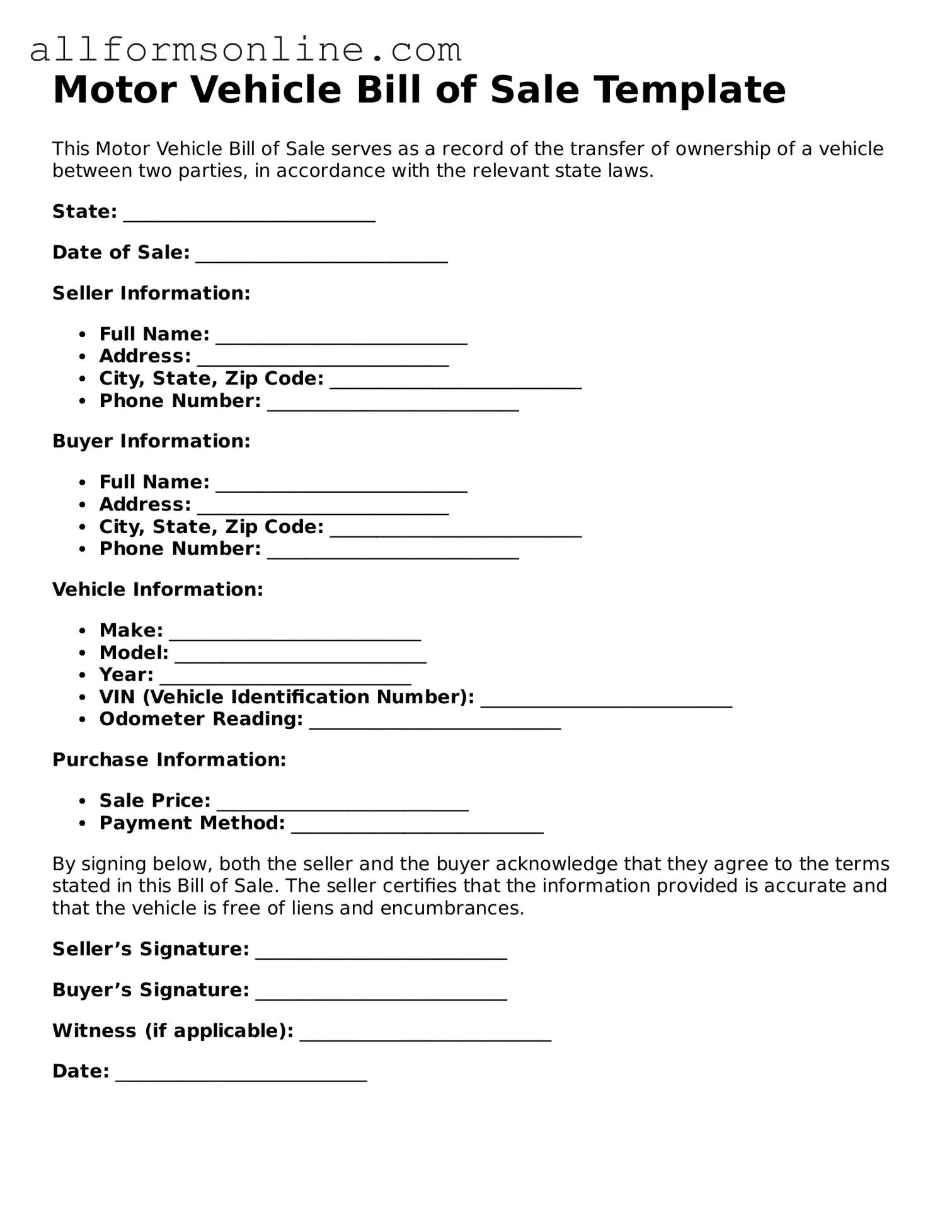What is a Motor Vehicle Bill of Sale?
A Motor Vehicle Bill of Sale is a legal document that records the sale of a vehicle from one party to another. It serves as proof of the transaction and includes important details about the vehicle, the seller, and the buyer. This document can be used for registration and title transfer purposes, ensuring that both parties have a record of the sale.
What information is typically included in the form?
The form usually includes the names and addresses of both the buyer and seller, the vehicle's make, model, year, VIN (Vehicle Identification Number), and odometer reading at the time of sale. Additionally, it may specify the sale price and any terms or conditions agreed upon by both parties.
Is a Motor Vehicle Bill of Sale required by law?
While not all states require a Bill of Sale for vehicle transactions, it is highly recommended. Having this document can protect both the buyer and seller in case of disputes. Some states may require it for vehicle registration or title transfer, so it’s essential to check your local laws.
How do I fill out a Motor Vehicle Bill of Sale?
To fill out the form, start by entering the names and addresses of both parties. Next, provide the vehicle details, including the make, model, year, and VIN. Make sure to include the odometer reading and the sale price. Finally, both parties should sign and date the document to make it official.
Can I create my own Bill of Sale?
Yes, you can create your own Bill of Sale, but it’s important to ensure that it includes all necessary information. Using a template can help ensure you don’t miss any critical details. Just remember that both parties must sign the document for it to be valid.
What should I do with the Bill of Sale after the sale?
After the sale, both the buyer and seller should keep a copy of the Bill of Sale for their records. The buyer may need it for vehicle registration and title transfer. The seller should keep it as proof of the sale in case any issues arise later.
